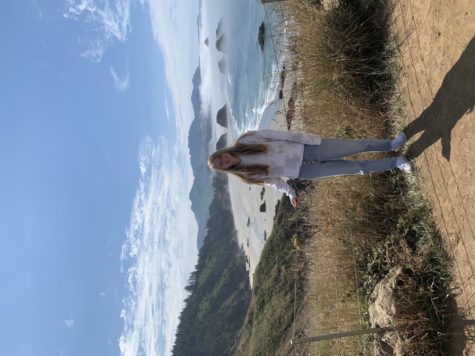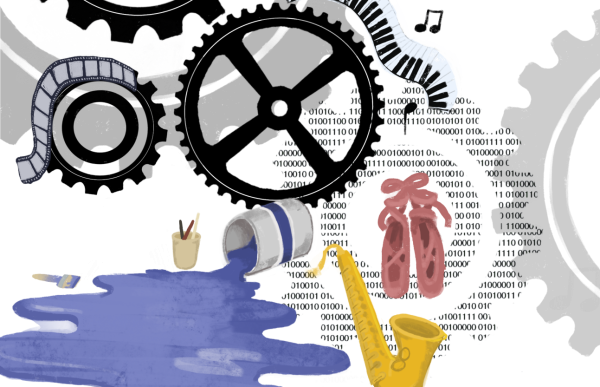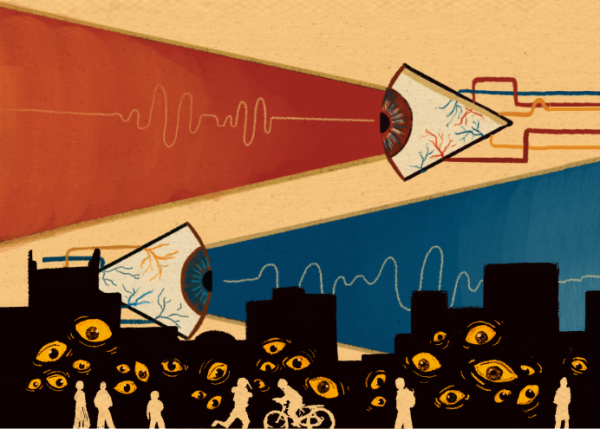Continuing after crisis: District 65 regroups and rebounds for next school year
The 2021-2022 school year bore hardships for students across the country. Returning to a full-fledged school schedule after a year of isolation proved to be challenging for various reasons, and student behavior was representative of this difficulty. A July report by the National Center for Education Statistics revealed that 84 percent of public schools believe that the pandemic negatively affected student behavior, and 87 percent of public schools reported that the pandemic took a toll on student socio-emotional development. The Evanston community was no outlier in the midst of this trend.
“[With COVID-19] and being remote and coming back to school [in] August and September, [there] was a lot of readjustments, both for us as teachers and for the students,” one District 65 teacher, Arnold*, shares. “For many of [students,] being away for those 16-18 months, they hadn’t really interacted with a peer in front of an adult, maybe at the park or online, but never face to face, and never certainly with [school rules] like, ‘No, we don’t use that kind of language here at school,’ or ‘No, you cannot touch them,’ ‘No, you can’t fight.’ They really struggled with getting socialized and normalized back into what a real school day looks like.”
*The teachers in this article spoke to the Evanstonian despite a mandate from District 65 that prohibited employees from talking to the press about some of the events that made headlines during the 2021-22 school year. As such, these teachers’ names have been changed to provide anonymity.
In alignment with this teacher’s perspective, students also noticed their peers struggling to adjust to the behavioral standards of in-person school. When two recent graduates of Haven Middle School considered their time in eighth grade, they both separately described this past year as “crazier” than previous years. One of the students, freshman Paula Hlava, recalls the increase in physical altercations amongst students.
“There [have always been] fights at Haven—like that’s just always been a thing,” she prefaces. “But it got a lot more violent and more intense this year and more frequent. On the first day of school, there was already a fight, and I remember thinking, ‘Oh my God, this school’s crazy’ … That [became] a constant thing—the fights.”
In late March, a Haven staff member required an ambulance after being punched by a student for attempting to break up a fight. In early April, a Haven teacher was sent to the hospital after her attempt to deescalate a student fight resulted in injury. The altercation caused the school to enter a soft lockdown, and Evanston police officers and paramedics were called to the scene. At the following Evanston/Skokie School District 65 Board of Education meeting, parents and guardians rallied for stronger safety precautions and protocols in District 65 schools.
“We, as a District 65 Board, share a concern for safety at Haven. Physical and emotional safety are a top priority given that it’s foundational to the ability to learn. We have made sure that we are fully up to date and are authorizing and encouraging the necessary deployment of resources,” Board President Anya Tanyavutti responded at the meeting.
Weeks later in early May, Nichols Middle School temporarily locked down after a student became violent with a staff member. Various reports disclose that the student was allegedly involved in a sexual assault case that occurred off campus, and the staff member sustained injury when confronting the student about the case.
Tensions continued to rise in the beginning of May, when it was also announced that several teachers were being transferred to teach at different schools, meaning they would also have to potentially teach different grades and subjects.
“It will be necessary to reduce 22 teaching positions for next school year; however, we are pleased that there will be no loss of educator jobs. While this will largely be accomplished through natural attrition (retirements, resignations, and leaves of absence), it will not be without impact,” District 65 administrators wrote in a published letter. “In order to keep our teaching core intact and better align staffing to enrollment, it will require the transfer of some educators to other positions within their school or to another in the district.”
A total of 40 teachers were to be transferred, 33 of which were involuntarily transferred.
“That was overwhelming to say the least. Like, I just couldn’t believe it,” a District 65 teacher, Elizabeth*, remarks in regards to the transfers.
Aside from just the staff, students were equally as upset by the news of the transfers.
“I think it’s horrible that teachers that have worked [in the district] for so many years and have had a good reputation out here are getting moved to completely different grades and subjects from what they’re [most] qualified to teach. I think it’s horrible, because the teachers that they did move had already been working at [these schools] for a long time,” says Hlava.
On Friday, May 13, Haven students organized a protest in response to the teacher transfers. Freshman and Haven graduate Devon Cravens describes the build-up to the protest.
“Before [the protest] happened, it was Monday, and a couple students and a couple teachers were talking about how they wanted to get together and do silent, peaceful protests on the first floor around the office. That’s what I heard.”
When the protest eventually came to life, it began as peaceful protest as intended. Reports of the protest recount that students exited their classrooms and quietly sat in the hallway. However, the original vision for the protest quickly became skewed when the tranquility shifted into disarray. Hlava recalls her experience that school day.
“On the announcements, they were like, ‘Everybody go back to class,’ but nobody listened, and you couldn’t get up or down the stairs, because there were so many people,” she shares. “Then, it turned into a lot of chaos, because people were throwing cups of water and people were slipping and doing backflips. It was kind of crazy. Then, the police cars came, and I don’t think the police actually went into the school, but they were outside of the school.”
The police were called during the protest but didn’t take any action when arriving on the scene. While Haven staff members were filtering all of their attention towards attempting to regain control over the student population, three nooses were being hung on a tree between Haven and Kingsley Elementary School, but they weren’t found until hours after the protest when Kingsley parents reported the scene to the police and the District 65 administration. At the time, it was rumored that, during the protest, Haven students had been chanting and bringing ropes towards the area where the nooses were found, and Evanston police officers were called to investigate the scene.
“This is a hate crime and a deliberate and specific incidence of an outwardly racist act. It resounds with a tone of hate and hurt that will impact members of our entire community, namely Black and African American students, staff, and families who have experienced generations of harm. What began as a peaceful protest by students is now tainted with hate and is part of a string of racist actions that continue to be directed at district and school administrators,” District 65 Superintendent Devon Horton wrote that evening in a letter addressed to the District 65 Community.
In the days following this upsetting turn of events, Haven students were provided with various resources to help them process and learn from what had happened. District 65 organized sharing circles for students to express their feelings during the school day, and teachers led lessons on the historical meaning of nooses in America. Despite these efforts, students were left unsatisfied with the administrative response.
“When I first heard about [the nooses that were found], I was in disbelief. I was like, ‘This isn’t actually real,’” Hlava describes her reaction. “We had like a couple days worth of lessons [regarding the occurrence], and then right after the lessons that we had, [the school] never talked about it again [with us]. I feel like me and a lot of other students were left without answers and confused, because [the school] never told us anything. They educated us on what a noose [is] and the history behind it, but they never really addressed the event itself. Which was more confusing for students, because we weren’t actually being told what was happening within our community.”
Cravens reinforces this feeling of confusion surrounding the events that took place.
“The day [we got] back [after the protest], we had a sharing circle in almost every class, and [this happened] every couple of days,” she recalls. “For a lot of us [students] it was annoying. [The school was] having us talk about it over and over again, but there’s no answers. We have a lot of questions, and [the school] had us ask a lot of questions, but we never got any answers back. It was really frustrating.”
The answers that these students crave regarding what exactly took place between Haven and Kingsley on May 13 didn’t come until over a month later. In late June, the Evanston Police Department concluded their investigation of the incident and reported that a Haven student was accountable for the nooses. District 65 declared that it would hold a separate investigation that could result in disciplinary consequences for the student, but the police stated that “the actions and motive of the involved juvenile did not meet the legal, statutory elements of a hate crime.” In short, the student will not be convicted of a Hate Crime Offense.
Despite all of the adversaries this past school year has held for District 65, the community still has hope entering next school year for a better experience.
“I’ve seen District 65 at its very best, and I’ve also struggled at District 65—it does come and go in waves,” Elizabeth shares. “I think, while this was a painful year, I do believe wholeheartedly that better times and better years are to come. If we just give ourselves a little bit of grace and a lot of respect, and just give ourselves a chance to have a great school year, I think it definitely can happen.”
Moving Forward
As those events make clear, throughout the 2021-22 school year, District 65 faced many challenges and controversies. One of the longest lasting decisions on the community was the 40 teacher relocations that occurred mid-school year.
At Haven Middle School, this sudden movement of teachers across the district has led to discontent amongst parents, students and teachers. The impact of these relocations created a negative ripple effect throughout the community, leaving many questions unanswered. One District 65 teacher Arnold* sums up the events of the past year in a concise manner.
“What I’ve learned,” Arnold says, “is that a system where words and actions among leaders don’t support each other leaves only skepticism, unease and insecurity in those that are being led.”
Hlava agrees, and sees the teacher reassignments as removing some of the stability within District 65 schools.
“They’re moving all the teachers that have been there and successfully worked there for a long time,” Hlava, who now attends ETHS as a freshman, says. “But a lot of those teachers were the reason [why] Haven didn’t completely fall apart because they were [so helpful]. I think it’s not fair, and it’s really just terrible.”
Elizabeth was involuntarily transferred and recalls their reaction to hearing the news.
“It broke my heart; I’m leaving my homeschool. I’m leaving a community that I helped build, that I think I’m a big part of. I’m going to a new school…not by my choice but by someone else’s choice. I’m heartbroken,” Elizabeth explains.
Students at Haven have not been informed of plans or programs for change in place for the next school year despite the events of last year and their concerns. When asked if she had any knowledge of any future plans in place, Hlava wasn’t aware of any future plans that Haven had put into place.
“I know that it’s the same administration,” Hlava says, “so I don’t know if they have plans, or if they’re just kind of going to go into [next school year] acting like nothing happened, but I haven’t heard of anything.”
Hlava proceeded to mention that the school’s response to the events that occurred at Haven last year weren’t sufficient in changing how stakeholders felt about the direction of the school.
“I mean, [the Haven administration] tried to have assemblies and lessons and stuff—I think there was an attempt—but it wasn’t very well thought out. I feel like the stuff they did do was more so that they could say that they did something and less less to actually help the students,” Hlava continued.
Hlava believes that for change to occur, the school’s staff must be fully committed to its vision for improvement.
“I understand the restorative justice thing, and I understand how that can be a more beneficial solution than punishing students, but I think that if they’re going to use that curriculum, they need to really enforce it. I would say enforcing that way of teaching and learning more, instead of just letting [students] get away with anything—actually using restorative justice and not just saying that you’re using it—is important.”
Restorative justice is an alternative tactic to traditional disciplinary measures that was implemented by District 65 this past year. Elements of the restorative justice model are seen at ETHS as well.
The idea is that instead of simply punishing students with traditional methods, students who’ve broken rules would partake in constructive problem solving. However, as Hlava points out, this can only work if the practice is one to which all parties are fully committed.
In addition to full buy in, the preparation for new teachers and staff members must be stronger, Hlava believes.
“For the new teachers that they’re hiring, actually telling them what they’re in store for, because I know for my English teacher last year, they kind of painted a completely different picture for her,” Hlava mentions. Hlava hopes that teachers will also receive better instruction on how to deal with student tensions.
“[The school needs to train teachers] on how to handle [difficult] situations,” Hlava says. “[The school should train teachers] on what actually is a beneficial way to deal with…the fights.”
Despite the general uncertainty in the student body, teachers are hopeful that next year will be a blank slate for the district, and that teachers, administrators and students can move forward positively.
“I think they have some recovery, and some healing to do there as well. So, I think across the district, we’re trying to put the last year behind us and sort of start fresh with this year,” Elizabeth* says.
“We can reset the rules and expectations, we can build our own community. So I think,
every school year, you have a chance to start afresh, and I think that’ll happen this year.”
When asked specifically about how the district should approach the rising tensions and fights that have been happening at Haven, Elizabeth says, “I don’t think it’s about discipline. I think it’s about accountability and character. So I think we’ve got to say that we are Evanston, and this is how we act. And we’re gonna hold each other accountable—all of us.”
While staff and students had many ideas about how to build a sense of community this school year, Horton explains some programs being implemented that are designed to foster academic success as well as healthy relationships.
This year, a program dubbed the Academic Skill Center will be used to help students improve their standardized test scores. Students that tested between the 25-50 percentile on standardized tests are eligible for this program; their parents would sign a waiver to allow them access to 40 minutes of tutoring a day during school hours. Students would also take practice tests during this time. While COVID-19 affected students socially, the pandemic also led to challenges for many students’ ability to engage academically at the same level as before, and additional time working on material is one way to build their academic skills up.
According to Horton, “Especially in African American and LatinX communities, we’ve seen improvements.”
ASC isn’t the only helpful program available to students this year, Horton explains.
“We’re actually launching AVID here in the middle schools,” he says.
AVID is a program currently being used by ETHS to prepare students for their post-high school careers. It focuses on studying and executive function skills. Horton hopes that by encouraging student success in these areas, the school environment will improve.
“AVID is designed to really target middle ground students … and give them access to tutoring during the school day,” Horton says. “It also gives them all of these different resources that allow them to excel and meet the mark for success when they go into high school.”
“Sometimes, when students struggle and get disconnected from the learning, it frustrates them as well as staff, and so it creates some tension,” he explains.
One other program being implemented this year will hopefully build on this idea of connecting academic and social success.
“Groups of about 10 to 12 students that may have had some struggles will be given mentors, who’ll work with these students to serve as a voice for them at the school, when they’re having issues in the classroom. We also bring the families of these students to workshops around opportunities to create businesses, opportunities to know how to do credit repair for their families, opportunities, how to do job interviews, or just some of the other resources that some of our students or families may need,” Horton explains.
The hope is that these programs, as well as better communication between everyone in the District 65 community, will create a better school experience in years to come.
“[What we’ve added] is going to be pretty significant, and [have a large] impact on the culture here.”
Your donation will support the student journalists of the Evanstonian. We are planning a big trip to the Journalism Educators Association conference in Nashville in November 2025, and any support will go towards making that trip a reality. Contributions will appear as a charge from SNOSite. Donations are NOT tax-deductible.















